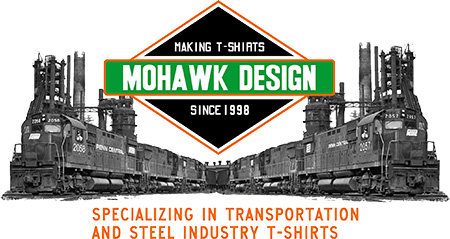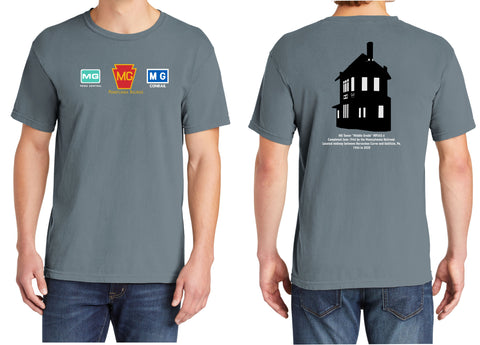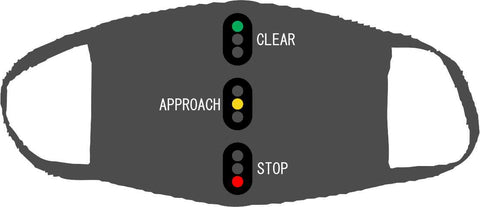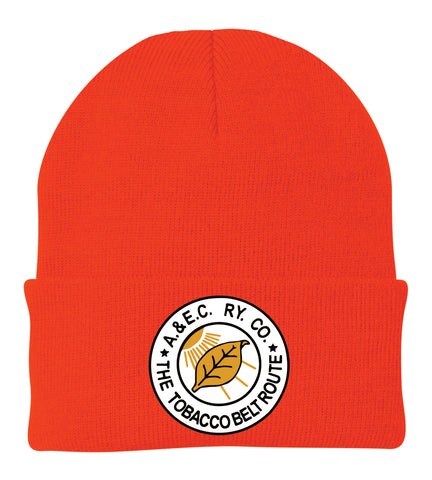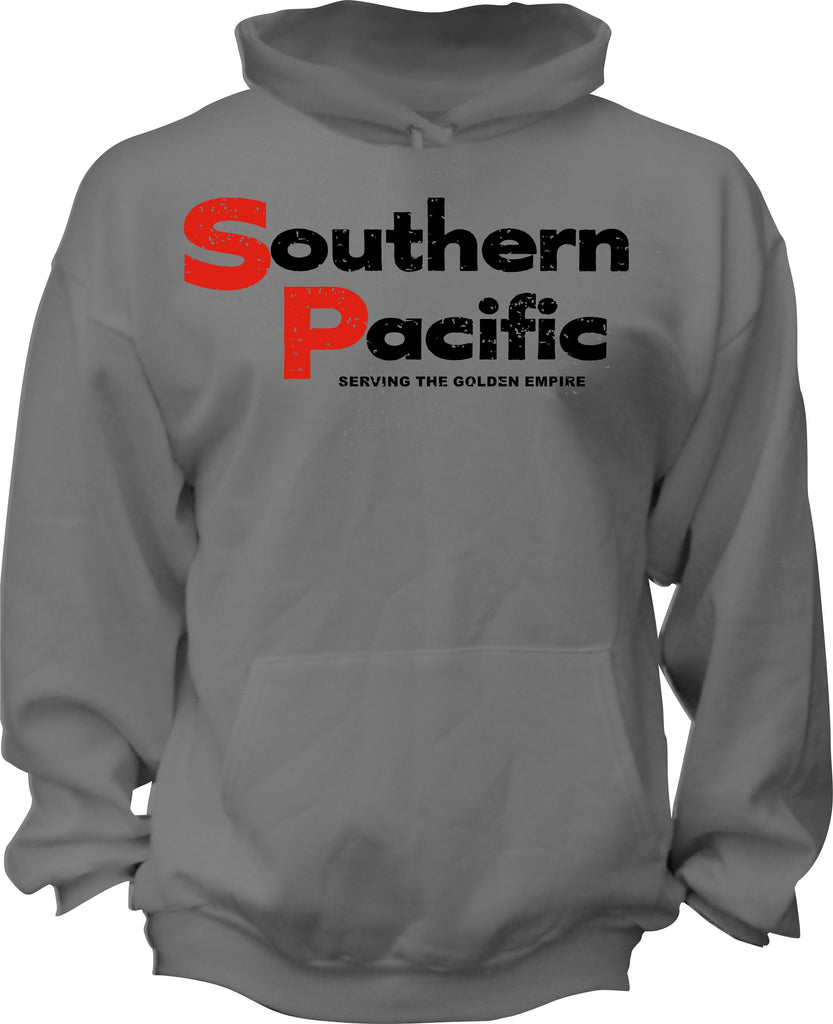
Southern Pacific Faded Hoodie
Southern Pacific Faded Hoodie
- Printed on Front
- 70/30 Blend
- Hood Color - SP Grey
The Southern Pacific (reporting mark SP) (or Espee from the railroad initials- SP) was a name of multiple American Class I railroads that existed from 1865 to 1998 and all operated in the Western United States. The names that represented the Southern Pacific were Southern Pacific Railroad, Southern Pacific Company and Southern Pacific Transportation Company.
The original Southern Pacific was founded as a land holding company in 1865, later acquiring the Central Pacific Railroad through leasing. By 1900, the Southern Pacific system was a major railroad system incorporating many smaller companies, such as the Texas and New Orleans Railroad and Morgan's Louisiana and Texas Railroad. It extended from New Orleans through Texas to El Paso, across New Mexico and through Tucson, to Los Angeles, through most of California, including San Francisco and Sacramento. Central Pacific lines extended east across Nevada to Ogden, Utah, and reached north through Oregon to Portland. Other subsidiaries eventually included the St. Louis Southwestern Railway (Cotton Belt), the Northwestern Pacific Railroad at 328 miles (528 km), the 1,331 miles (2,142 km) Southern Pacific Railroad of Mexico, and a variety of 3 ft (914 mm) narrow gauge routes. The SP was the defendant in the landmark 1886 United States Supreme Court case Santa Clara County v. Southern Pacific Railroad which is often interpreted as having established certain corporate rights under the Constitution of the United States. In 1929 SP/T&NO operated 13848 route-miles not including Cotton Belt, whose purchase of the Golden State Route circa 1980 nearly doubled its size to 3,085 miles (4,965 km), bringing total SP/SSW mileage to around 13,508 miles (21,739 km).
In 1969, the Southern Pacific Transportation Company was established and took over the Southern Pacific system; this Southern Pacific railroad is the last incarnation and was at times called "Southern Pacific Industries", though "Southern Pacific Industries" is not the official name of the company. By the 1980s, route mileage had dropped to 10,423 miles (16,774 km), mainly due to the pruning of branch lines. In 1988, the Southern Pacific Transportation Company (including its subsidiary, St. Louis Southwestern Railway) was taken over by Rio Grande Industries, the parent company that controlled the Denver and Rio Grande Western Railroad. Rio Grande Industries did not merge the Southern Pacific Transportation Company and the Denver and Rio Grande Western Railroad together, but transferred direct ownership of the Denver and Rio Grande Western Railroad to the Southern Pacific Transportation Company, allowing the combined Rio Grande Industries railroad system to use the Southern Pacific name due to its brand recognition in the railroad industry and with customers of both the Southern Pacific Transportation Company and the Denver and Rio Grande Western Railroad. A long time Southern Pacific subsidiary, the St. Louis Southwestern Railway was also marketed under the Southern Pacific name. Along with the addition of the SPCSL Corporation route from Chicago to St. Louis, the total length of the D&RGW/SP/SSW system was 15,959 miles (25,684 km). Rio Grande Industries was later renamed Southern Pacific Rail Corporation.
By 1996, years of financial problems had dropped Southern Pacific's mileage to 13,715 miles (22,072 km). The financial problems caused the Southern Pacific Transportation Company to be taken over by the Union Pacific Corporation; the parent Southern Pacific Rail Corporation (formerly Rio Grande Industries), the Denver and Rio Grande Western Railroad, the St. Louis Southwestern Railway and the SPCSL Corporation was also taken over by the Union Pacific Corporation. The Union Pacific Corporation merged the Denver and Rio Grande Western Railroad, the St. Louis Southwestern Railway and the SPCSL Corporation into their Union Pacific Railroad, but did not merge the Southern Pacific Transportation Company into the Union Pacific Railroad. Instead, the Union Pacific Corporation merged the Union Pacific Railroad into the Southern Pacific Transportation Company in 1998; the Southern Pacific Transportation Company becomes the surviving railroad and at the same time the Union Pacific Corporation renamed the Southern Pacific Transportation Company to Union Pacific Railroad. The Southern Pacific Transportation Company becomes the current incarnation of the Union Pacific Railroad; the former Southern Pacific Transportation Company is still operating as the current incarnation of the Union Pacific Railroad. The Southern Pacific Rail Corporation remained a subsidiary of the Union Pacific Corporation until 2015 when it was merged into the former Southern Pacific Transportation Company, the current Union Pacific Railroad.
Southern Pacific legacy founded important hospitals in San Francisco, Tucson, and elsewhere. In the 1970s, it also founded a telecommunications network with a state-of-the-art microwave and fiber optic backbone. This telecommunications network became part of Sprint, a company whose name came from the acronym for Southern Pacific Railroad Internal Networking Telephony
